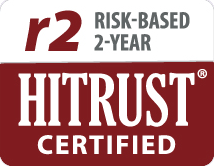A few years ago, a data warehousing project was a multi-year, multi-million dollar endeavor with a high chance of failure. Waterfall methodologies stressed the completeness of vision and requirements over speed. They required the business to articulate a clear future state that had often lost relevance by the time anything was actually delivered.
This high-cost/high-risk proposition was too much for most organizations to accept. In response, agile strategies are now being used in data warehouse (DW) and BI projects more than ever before.
What is the Agile Data Warehouse Methodology?
A data warehouse pulls together data from across the organization and other sources—then selects, organizes, and aggregates this data for easier comparison and analysis. It maintains strict integrity and accuracy in a process known as Extract, Transform, Load (ETL), which is responsible for loading data in portions to fit in the data warehouse recommended structure.
Data warehouse applications integrate with BI tools to help analysts explore the data, design hypotheses, and come up with answers for them. The data warehouse helps streamline the preparation of data for analysts to build reports to keep track of important metrics in the business. Think of the data warehouse as the foundation that BI tools and data visualization live on top of.
While a data warehouse is a thing, Agile Data Warehousing is all in how it’s accomplished. Agile methodologies focus on delivering an end-to-end Minimum Viable Product (MVP) in iterative cycles as opposed to a fully built solution in one shot. By using this method, delivery speed is increased, the business can see incremental results, and a more robust data-driven solution is built over time.
The opposite is called the Waterfall methodology, where all requirements and specifications are expected to be designed in detail and handed off to the development team to build. Only when large chunks of work are finished can the business finally provide feedback. This is an IT-driven methodology.
A business-driven methodology, which is the main focus in an Agile DW, takes an iterative approach to keep business users involved. Each cycle builds off the previous cycle and introduces new features of the product until the entire project is completed. Each iteration includes analysis, design, coding, testing, and deployment for the business to continuously monitor the results.
Taking a step-by-step approach based on short iterations reduces complexity, as well as risk, while increasing the overall quality of the project. This means that results can be delivered quickly and testing is done continuously to ensure everything works for the business without any surprises.
Watch out for firms and project leaders that tout being Agile when really in disguise they are Waterfall junkies with shorter project timelines. If you are vetting a firm, make sure to ask questions about their work process.
Benefits of Agile Data Warehousing
Agile principles’ aim is to reduce delivery time and make the development process more flexible. Flexibility guarantees a rapid response to both technological evolution and business needs.
Ultimately, there are numerous benefits of agile data warehousing. Let’s look at each in more detail.
Speed to Value
Agile data warehousing is designed to increase speed to value. Starting small with a specific subject area or data source, then building from data ingestion to data visualization allows the business to see measurable results quickly and confirm their vision. This approach provides a highly collaborative way to deliver value earlier.
The faster the business can see results, the faster they can make better decisions. Most importantly, leadership and project sponsors can continuously be provided measurable features via BI tools to confirm their project is on the right track.
Reduces Complexity
Agile is all about breaking projects into small, end-to-end portions that are completed in days or weeks. The data warehouse solution architecture is also about making critical decisions and predictions about how a project will look like months later or some time into the future. Agile helps deliver results fast, while the architecture helps prevent refactoring and technical problems later on.
In traditional data warehouse development systems, one or more solution architects are in charge of the overall design of the system. They are responsible for data modeling, coding, reusable frameworks and patterns that should act as a guide to developers.
In an agile business intelligence environment, things are a bit different. Agile data warehousing optimizes for a more collaborative process with all stakeholders working together when it comes to critical thinking, designing, providing feedback, peer review, and consistency to make a great product. This collaboration reduces the complexity of the entire project.
Risk Management
Apart from reducing the complexity of projects, separating a project into smaller chunks—which is the main focus of agile data warehouse design—allows businesses to manage project risk.
Instead of having one huge failure that may bring the entire project to a halt, you get many smaller losses and wins along the way. This helps mitigate risk and address specific areas that have been affected.
It’s the responsibility of the project manager to lead the data warehouse team in identifying all risks associated with the implementation of data warehousing best practices. The main aim of this process is to record all the essential information related to project risk. This makes it easier for the team to analyze and come up with quick solutions.
Project Transparency
Engaging stakeholders and business users are important for any DW project, regardless of the strategy used. This includes transparency of assigned tasks where everyone knows and understands what everyone else is working on. As a result, it becomes easier to share ideas and identify challenges as they arise.
Scrum includes several key features that make a DW or BI project progress and challenges visible. They include the task board, burndown charts, and daily scrums that are accessible to the management team. These are the main tools the team uses to track and monitor progress. And it’s very rare to have challenges affecting the main project, without the knowledge of project stakeholders.
______________
Adopting an agile methodology is the best way to achieve a data warehouse and BI system built for what the business needs today and tomorrow.
To successfully achieve agile data warehousing, there must be strong collaboration between business users and stakeholders and the correct implementation of automation, evolutionary modeling, and continuous integration. This allows your team to deliver results, avoid unplanned investments, and reduce risks through continuous integration.
Ready to adopt an agile approach and build a successful data warehouse? Fantastic. Skypoint CSG is standing by to deliver.












